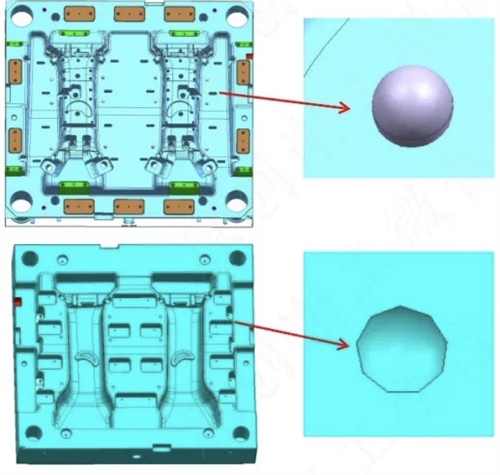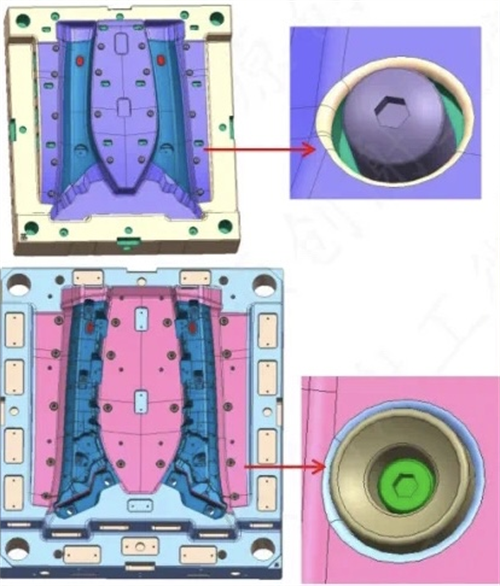Low-pressure injection molding process is a kind of injection molding process that uses very low injection pressure (0.15-4MPa) to inject hot molten plastic into the mold and cures it quickly. The process principle is to put the skin into the mold in advance, and then inject the plasticized molten plastic into the closed mold cavity with the thrust of the screw, and then obtain the product after curing and shaping. The material used for low-pressure injection skin can be fabric or PVC fabric. Low-pressure injection molding is a production process that is widely used for automotive door guards, pillar guards and parcel shelf guards.
The skin is put into the mold in advance, and then the molten plastic is injected into the closed cavity by the thrust of the screw, and then the product is obtained after curing and shaping. The material used for low pressure injection skin can be fabric or PVC fabric. At present, this process has been widely used in the production of automobile door guards, column guards and parcel shelf guards, etc.
(1) Low-pressure injection molding is to fuse the skin material with the plastic substrate, and there is no possibility of peeling off.
2) The low-pressure injection molding process is more environmentally friendly because there is no gluing process necessary for the cladding process.
(3) The internal structure of low-pressure double-layer injection molded parts can be designed arbitrarily, and the freedom of surface modeling is greater than that of the overmolding process, and the modeling features are clearer and more rigid.
(4) Low-pressure injection molding does not require additional secondary cladding, which improves production efficiency.
5)Low-pressure injection molding products have good handfeel and appearance.
(6) Low pressure injection molding products have low injection pressure, which can effectively protect the internal parts of the product and low scrap rate.
Post time: Feb-16-2022



